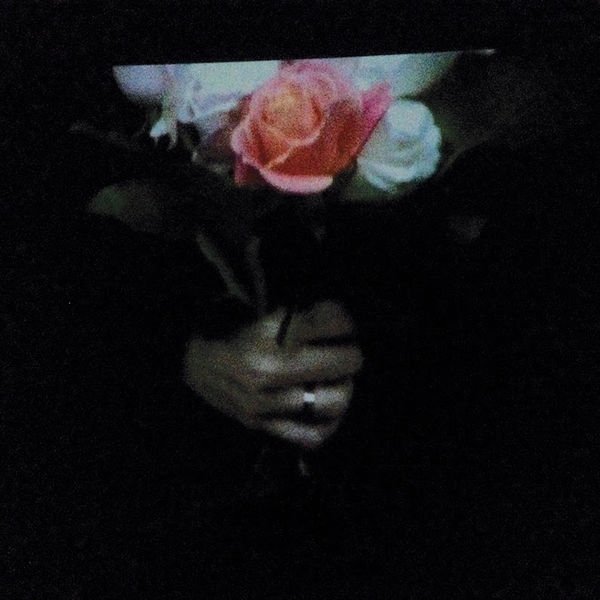Aeonflower is a very different beast to Paper Dollhouse’s debut album, though it’s no less beautiful, unsettling, or eerie. Its predecessor, A Box Painted Black, released in 2012, may have been filtered through the Radiophonic hauntology beloved of Broadcast, but it was still recognisably an atmospheric, lo-fi folk record that found Astrud Steedhouder singing recognisable songs over sparse, echoing acoustic guitar- even nodding to the blues on that album’s ‘William’.
There are no such familiar structures to hang onto on Aeonflower. Indeed, if anything on A Box Painted Black pointed the way to its successor, it was maybe the spoken word sound collage of ‘I Dreamt You More Than Ever,’ or the wordless lament of the closing ‘Moon.’ For Aeonflower is much more in the tradition of Britain’s dark, occult, post-punk avant-garde, as suggested by its title, a nod perhaps to the aesthetics and obsessions of David Tibet’s long-running Current 93. And it’s the likes of C93, Coil, Throbbing Gristle and the Legendary Pink Dots that are the true antecedents of Paper Dollhouse here, along perhaps with the outer fringes of electronic pop like Cabaret Voltaire.
The brief, moody synthesiser overture of ‘Oracle’ suggests another period of transition, that between Joy Division’s Closer and New Order’s Movement, before the slow, stately ‘Stand’ emerges at least partially from the long shadows: "I stand- you put the lights on me." Gothically mournful, the bass pulses like the first slow spots of rain, and choral vocals seem to be merely breathing rather than chanting or singing, like some keening animalistic wake. Yet the atmosphere is fragile, contained, as in the work of Durutti Column or David Sylvian.
A primitive toy drum heartbeat ushers in ‘Helios’, soon joined by hissing, crackling mechanical production and synth bass to conjure one of the album’s warmest moments, suggesting Fad Gadget or the earliest lo-fi experiments by Yazoo. But even here the call-and-response, spoken vocals are buried in the mix and the whole piece is strikingly sparse and empty. It feels simultaneously casual and sacred, as incidental and profound as a blood-red sunset through banks of grey cloud.
The abrasive static of ‘Psyche’ seems like an intrusion, or an unwelcome visitation. It’s as though you’re picking up numbers stations on your shortwave radio in a lonely house out in the fens, or hearing ghostly voices from beyond the grave coming through the TV in your tower block flat at 3am. ‘Your Heart’ and ‘Diane’ hint at pop music, but reveal instead its ghost, its painful absence. The former could almost be one of William Basinski’s Disintegration Loops in the latter stages of decay, or one of those recordings demonstrating all the sibilances and frequencies lost when an analogue song is transferred to MP3. Here Paper Dollhouse sound like Grimes being eviscerated by invisible demons, or somehow living trapped between dimensions, with only the most tenuous presence in our own sensory universe. On ‘Diane’ a wailing vocal rises giddily like smoke up a chimney, then disappears into the ether; the synth bass growls around beats that seem generated by some pre-industrial spinning jenny, and the girl’s name of the title is roughly repeated in desperate isolation, as though summoned by a séance.
Make no mistake, this is deeply creepy music. Whether the uncanny, eldritch vibrations of ‘Silence’ or the spare, repeated four-note guitar riff of ‘In The Sun’ (one of the only uses of the guitar on the LP), which is suspended in a Martin Hannett-like space, a haunted darkness in which the vocals come apart like some distracted incantation. The near-absolute minimalism of ‘Black Flowers’ finally gives way to ‘Siren’, in which the atmospheric build of the shimmering guitars suggests Ennio Morricone, particularly the Maestro’s work with his favoured vocalist Edda Dell’orso.
The mostly wordless, electronic darkness of Aeonflower may disappoint some who loved A Box Painted Black, but conversely many who failed to be won over by that album could find much to connect with on its successor. In my opinion, both are wonderful, unearthly records; the shift in emphasis from the rural to the neo-industrial merely adds new dimensions to Steedhouder’s ongoing collaboration with musician and visual artist Nina Bosnic. If this is still folk music, it harks back to a time before song, of primordial, inarticulate chanting and ritual drones – then leaps far forward, to the ghosts in the machinery of our modern era. The dark is rising.
<div class="fb-comments" data-href="http://thequietus.com/admin/articles/17377-paper-dollhouse-aeonflower-review/” data-width="550">


